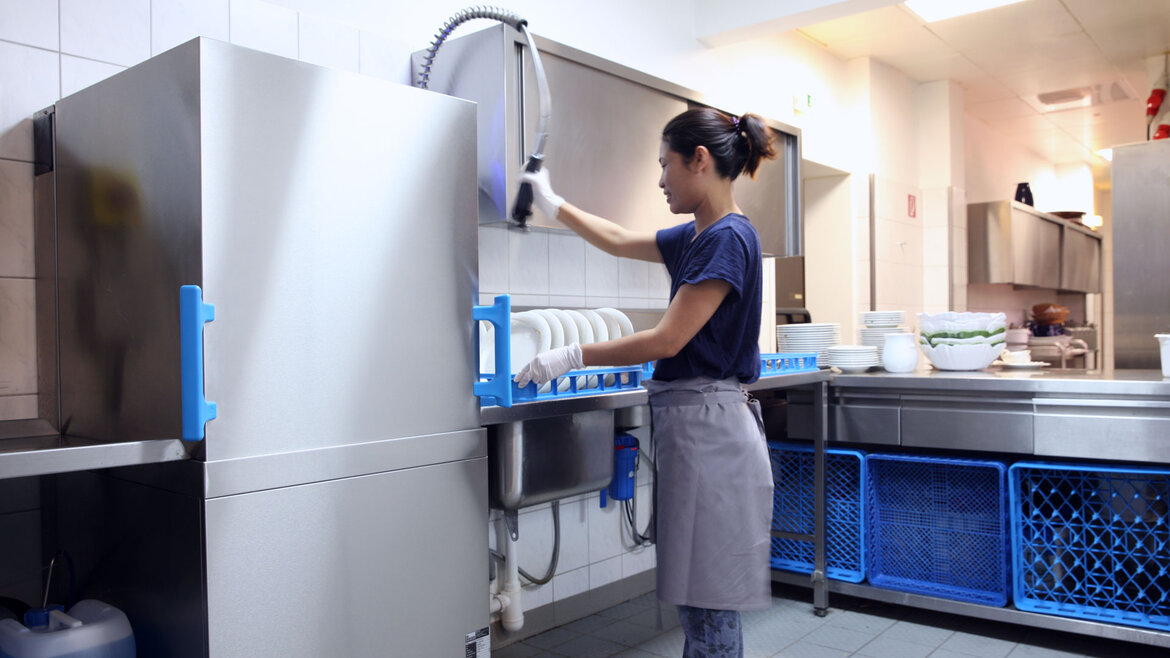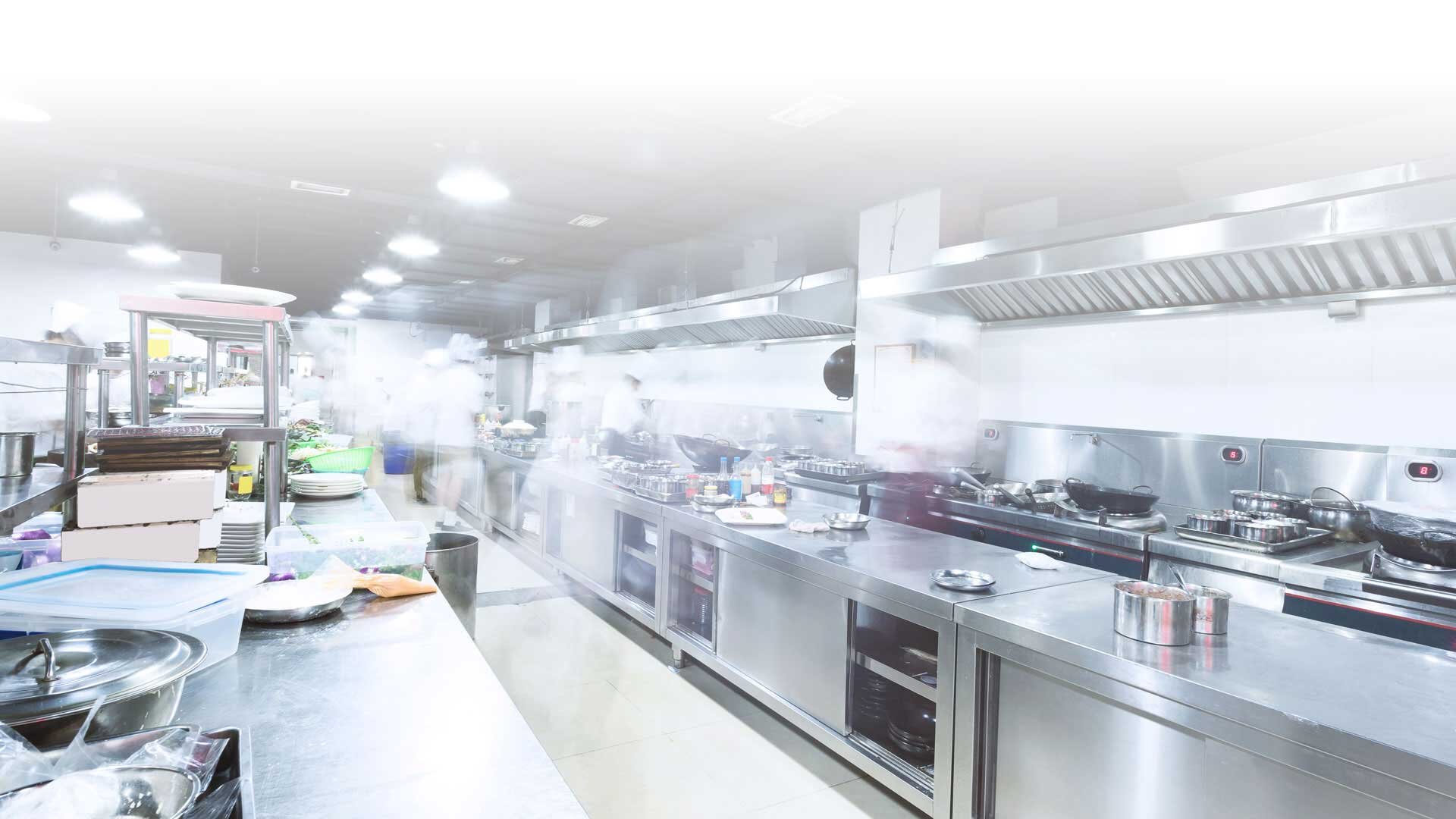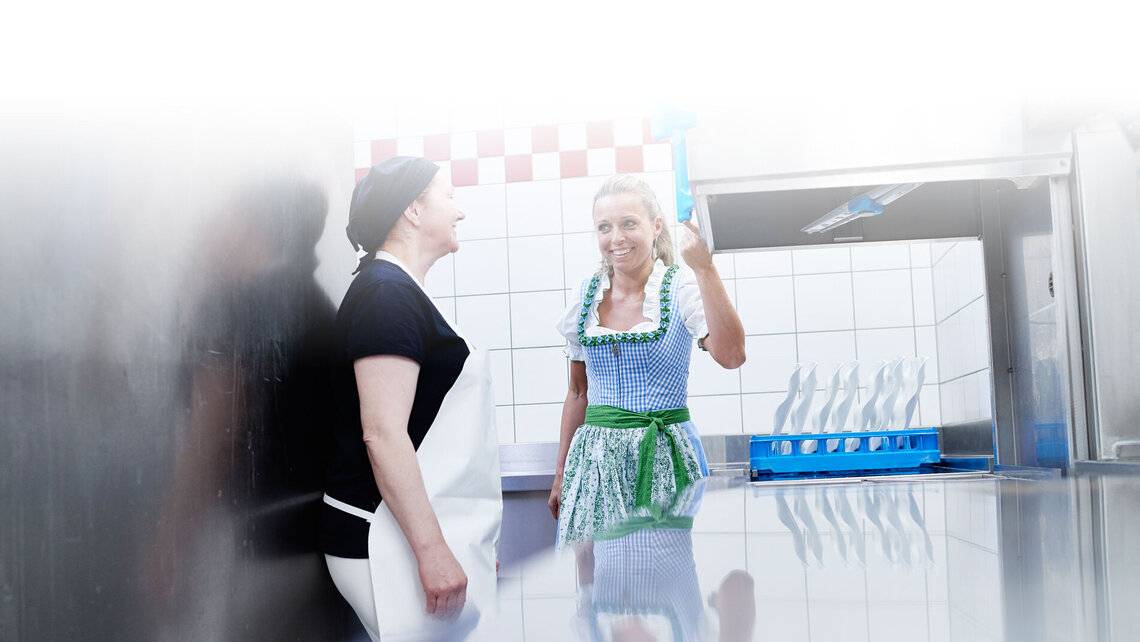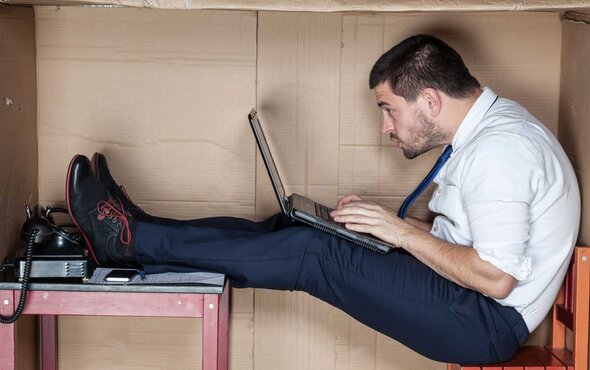6 TIPS
for better working conditions
THIS HAPPENS MILLIONS OF TIMES A DAY
in restaurants, bars, cafés and hotels all over the world.

As well as colds, flu and similar ailments, other common causes are musculoskeletal complaints such as back pain, lumbago, skeletal disorders, sciatic pain and spinal disc problems. Of course, nobody can fully prevent these conditions from occurring. However, clever kitchen planning that takes full account of ergonomics can help improve the overall situation in the workplace.
Convenience at the touch of a button: with the M-iClean H hood type dishwashing machine, the hood no longer needs to be laboriously opened and closed by hand
FOOD SERVICE IS TOUGH ON THE BACK
Back pain has many possible causes, ranging from inactivity and stress to poor posture. And people who work in the food-service industry face a range of other challenges, too. They tend to be on their feet more than in many other professions, often working ten-hour shifts and doing physically demanding jobs. Anyone who works in a restaurant or commercial kitchen knows how important it is to have ergonomic working conditions and workflows that make the best use of the time and space available. What's equally important is how you arrange the equipment itself. For example, glasswashers and dishwashing machines should be arranged in the dishwashing area in a way that produces the highest quality and most cost-effective results. At the same time, the people working there should not be put under too much physical strain, and they certainly should not come to any harm, even if they do the same job over a period of many years.

IN ADDITION
factors such as heat and humidity - i.e. the indoor climate - determine the ergonomics of a workplace in a large kitchen or restaurant. The more the temperature in the kitchen rises, the more the efficiency of the employees decreases. But MEIKO has a solution for this, too. Dr. Thomas Peukert, Head of the Design and Engineering Department stresses, ‘On request, we equip every M-iClean HM and HL with a heat recovery system or integrate an additional panel to keep steam inside the hood when the hood is opened. Both of these options improve the indoor climate and ensure that people are not subjected to unnecessarily high temperatures or clouds of steam.’
Both of these options improve the indoor climate and ensure that people are not subjected
to unnecessarily high temperatures or clouds of steam.’
ERGONOMICS IMPROVES EFFICIENCY
Professor Peter Schwarz – a physicist who teaches in the Faculty of Life Sciences at Albstadt-Sigmaringen University in Germany – is convinced that the issue of ergonomics in commercial kitchen planning is here to stay. ‘Anyone planning a restaurant or commercial kitchen needs to be an expert in process and logistics planning, because ultimately they are dealing with a manufacturing environment for producing meals, albeit on a small scale. Taking ergonomics into consideration is a key part of the planning process,’ says the ergonomics expert.
Convenience at the touch of a button: with the M-iClean hood type dishwashing machine, the hood no longer needs to be laboriously opened and closed by hand.
PLANNING IN A FOOD-SERVICE KITCHEN
Ergonomics expert Peter Schwarz knows that intelligent kitchen planning results in reduced absenteeism in food service.
He is the author and editor of the standard reference work in kitchen planning, ‘Großküchen: Planung – Entwurf – Einrichtung ’ (Commercial kitchens: planning – designing – fitting), published by Huss in Germany. As well as the aspects discussed above, the quality of an ergonomic workplace also depends on geometric parameters. In other words, it raises questions such as: how far away is the dishwasher? What position do I have to be in to see the machine's operating panel? From how far away can I see it? And from which angles? And the way a workplace is configured doesn't just have an effect on people's bodies. Peter Schwarz says, ‘If people are happy in their job, if they feel valued and enjoy their work, then their efficiency will automatically increase. It also means that they won't simply call in sick at every opportunity.’




